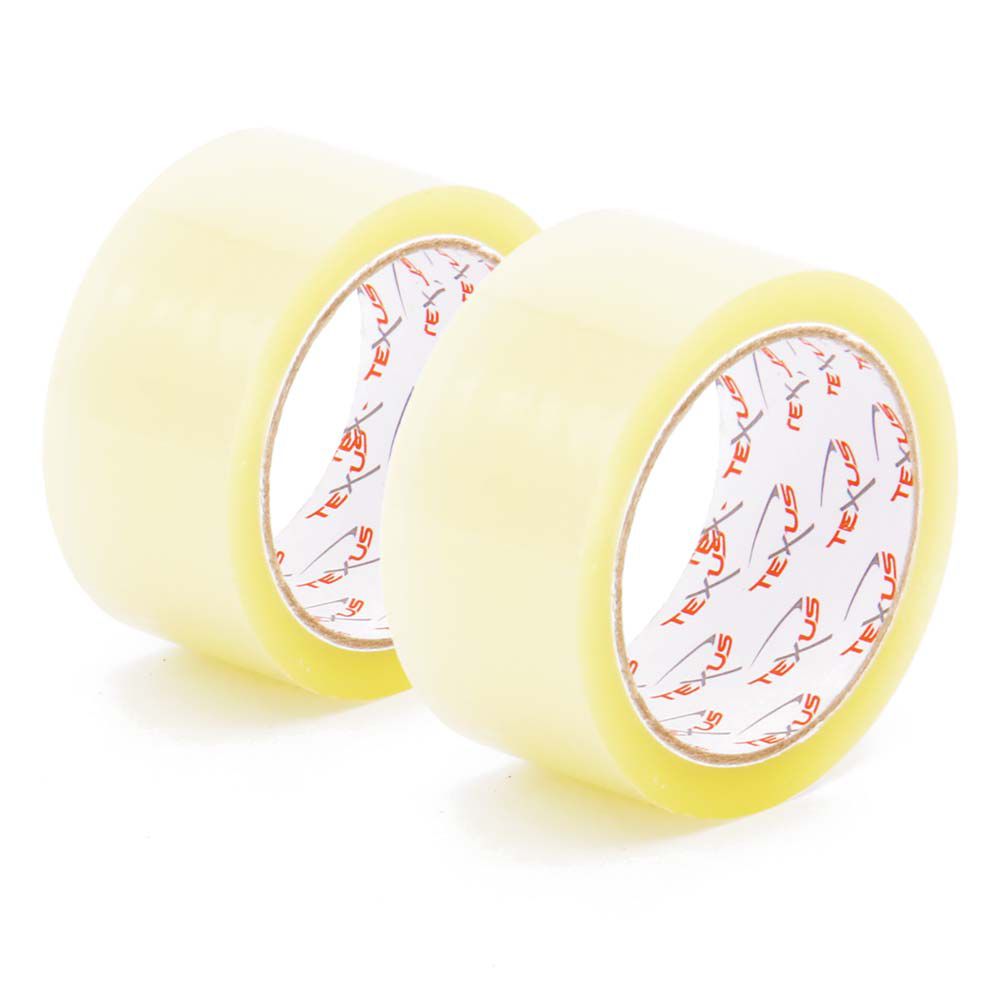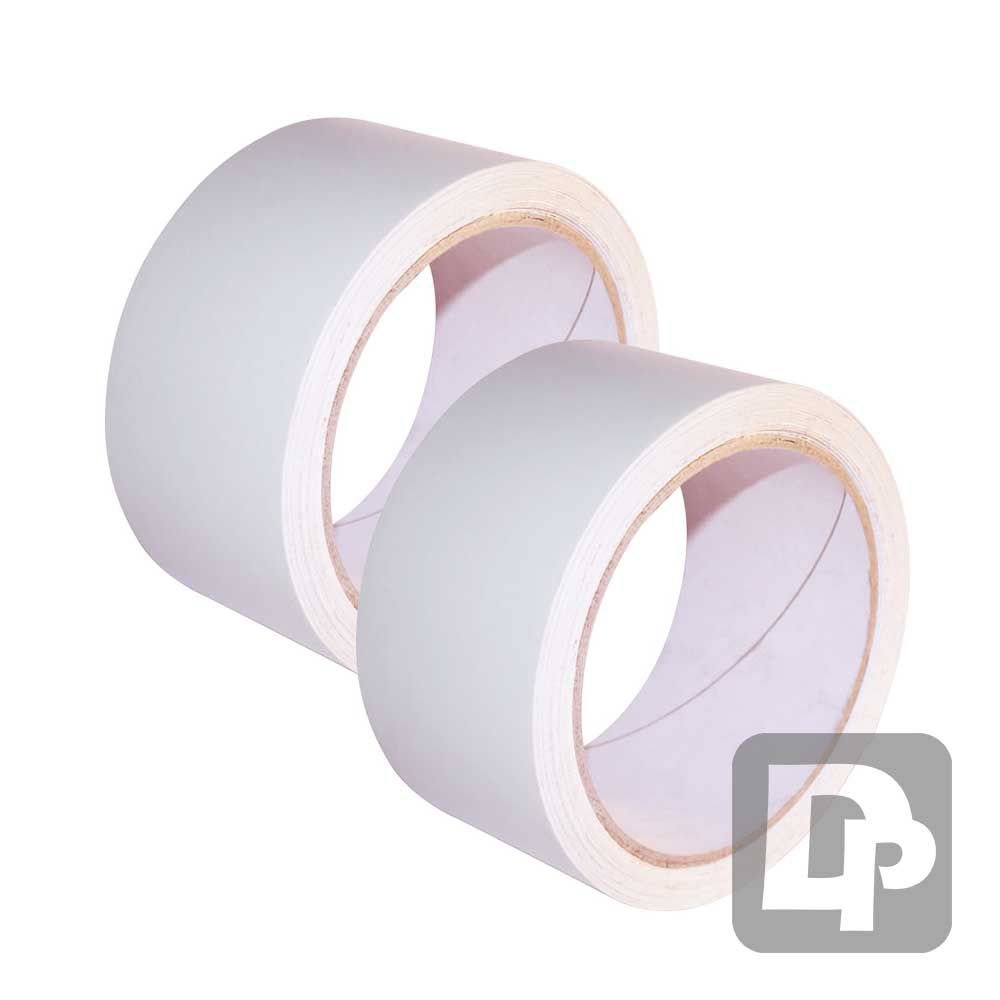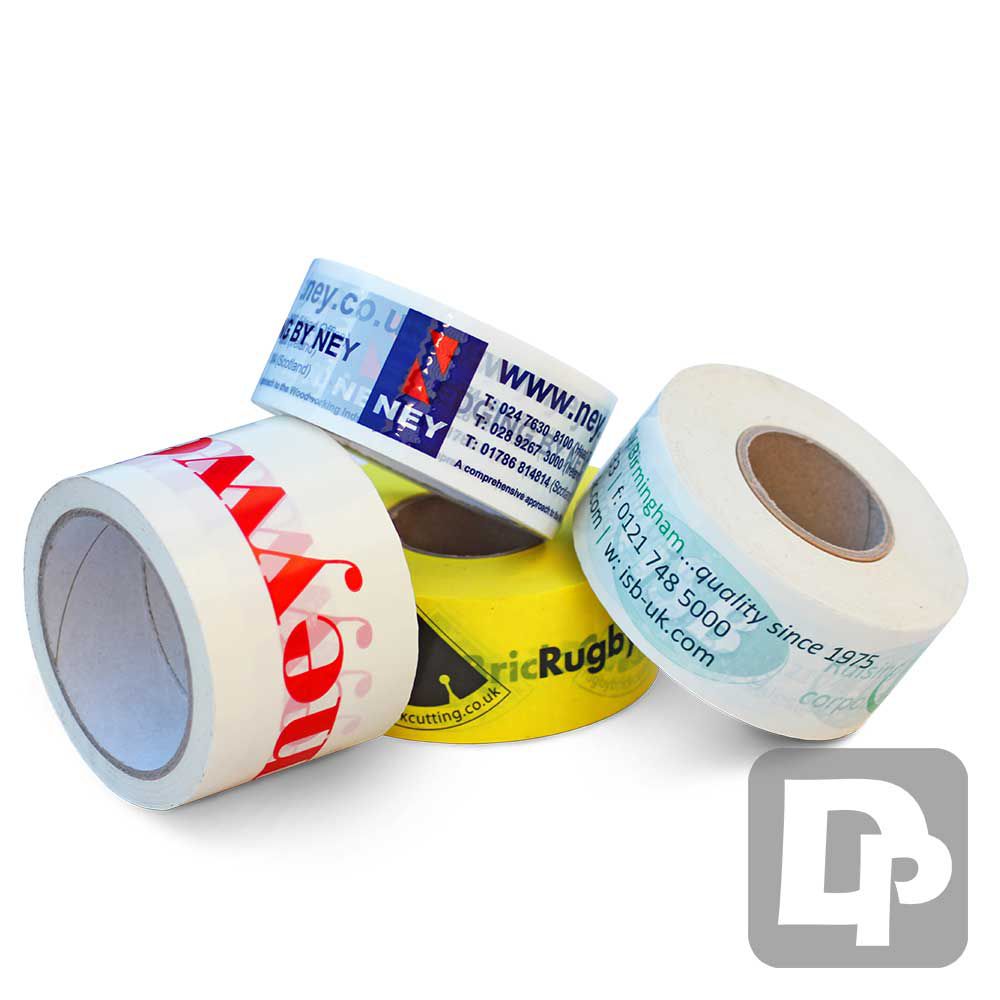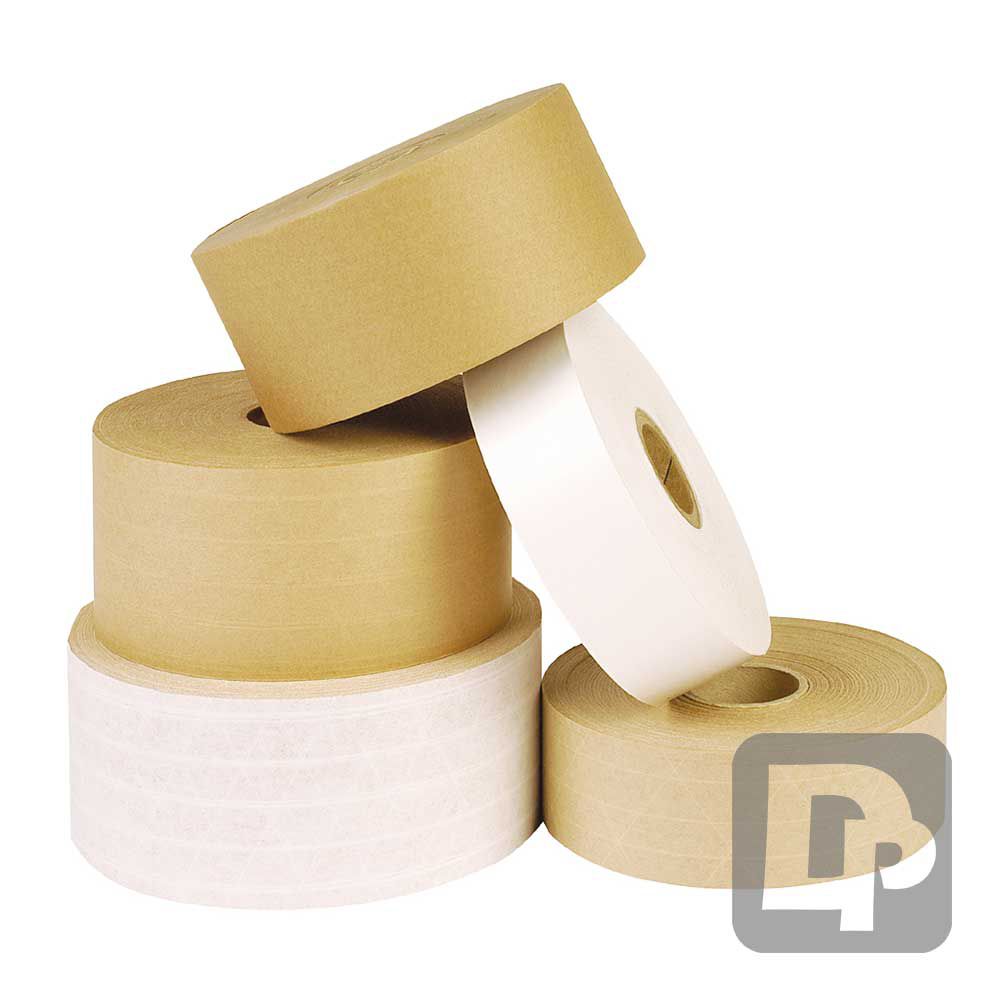Parcel Tape: The Ultimate Guide to Taping Your Parcels
Welcome to our comprehensive guide on parcel tape – the unsung hero of the packaging world. As a leading provider of premium packaging solutions, we understand the critical role that parcel tape plays in ensuring secure and efficient shipping. In this comprehensive guide, we will explore everything you need to know about parcel tape, from its various types and features to its applications and benefits. Whether you're a business owner, an online seller, or an individual sending packages, parcel tape is a crucial component of successful shipping. Let's dive into the world of parcel tape and discover how it can elevate your packaging game.
 What is Parcel Tape?
What is Parcel Tape?
Parcel tape, also known as packaging tape or shipping tape, is a type of adhesive tape used to seal and secure packages for shipping and transportation. It plays a vital role in ensuring that packages are properly sealed, protecting the contents during transit, and preventing them from opening or becoming damaged during handling.
Parcel tape is typically made from durable materials, such as polypropylene, PVC, or paper, with an adhesive backing on one side. The adhesive side adheres firmly to cardboard boxes, corrugated cartons, and other packaging materials, creating a strong and reliable seal. The adhesive on parcel tape is usually pressure-sensitive, meaning it adheres firmly to surfaces with light pressure and requires no additional heat or water activation. This makes it easy to use and convenient for sealing packages quickly and efficiently.
Parcel tape serves multiple functions in the packaging process:
Sealing: The primary purpose of parcel tape is to seal the openings of boxes, cartons, and parcels securely. It prevents the contents from falling out or getting damaged during transit.
Protection: Parcel tape provides an additional layer of protection to packages, helping to safeguard the contents from dust, dirt, and moisture.
Tamper-Evidence: Some types of parcel tape come with tamper-evident features, such as security patterns or special adhesives that leave a visible mark when the tape is removed. This helps to detect any unauthorized attempts to open or tamper with the package during shipment.
Branding: Parcel tape can be customized with printed logos, messages, or branding, providing businesses with an opportunity to promote their brand and enhance the unboxing experience for customers.
Identification: Coloured parcel tape or tape with printed labels can be used for identification purposes, helping to categorize packages based on contents, destination, or handling instructions.
Bundling: In addition to sealing packages, parcel tape can be used for bundling together smaller items or securing loose items within a larger package.
Parcel tape is an essential tool for businesses involved in shipping and e-commerce, as well as individuals sending packages for personal or professional purposes. Its reliability, ease of use, and ability to provide secure and efficient packaging make it an indispensable part of the shipping process.
 Types of Parcel Tape
Types of Parcel Tape
There are several different types of parcel tape available, each designed to cater to specific packaging needs and requirements. The following are some of the most common types of parcel tape:
- Standard Parcel Tape: Standard parcel tape, also known as general-purpose packaging tape, is the most commonly used type of tape for sealing packages. It is made from a durable material such as polypropylene and features a strong adhesive that provides a secure seal. Standard parcel tape is suitable for most everyday packaging needs and offers excellent strength and adhesion.
- Heavy-Duty Parcel Tape: Heavy-duty parcel tape is designed for securing larger or heavier packages that require extra strength and reinforcement. It is typically thicker and stronger than standard parcel tape, making it ideal for packaging bulkier items or shipments that may undergo rough handling during transit.
- Printed Parcel Tape: Printed parcel tape comes with custom designs, logos, or messages printed on the tape's surface. Businesses often use printed parcel tape as a branding opportunity to promote their company or product while ensuring secure packaging. It enhances the visual appeal of the package and helps create a professional presentation for customers.
- Fragile Tape: Fragile tape is specially designed to alert handlers and recipients to the delicate nature of the package's contents. It typically features bold red letters that read "Fragile" or "Handle with Care." Fragile tape helps prevent mishandling and reduces the risk of damage to delicate or breakable items during shipping.
- Tamper-Evident Tape: Tamper-evident tape is equipped with security features that provide evidence of tampering or unauthorized access to the package. When the tape is removed or tampered with, it leaves a visible mark or void message, indicating that the package's contents may have been compromised. Tamper-evident tape is commonly used for secure shipments or packages containing sensitive or valuable items.
- Reinforced Gummed Tape: Reinforced gummed tape, also known as water-activated tape, is a type of tape that requires water to activate its adhesive. When the tape is moistened, it forms a strong bond with the carton surface, creating a secure seal. Reinforced gummed tape is resistant to tampering and offers excellent strength and durability.
- Eco-Friendly Parcel Tape: Eco-friendly parcel tape is made from sustainable materials and is designed to be recyclable or biodegradable. It provides an eco-conscious packaging solution for businesses and individuals looking to reduce their environmental impact and promote sustainable practices.
Each type of parcel tape has its unique advantages and is suitable for different packaging applications. When selecting parcel tape for your specific needs, consider factors such as the weight and nature of your packages, the desired level of security, and any branding or identification requirements.
 Features and Benefits of Parcel Tape
Features and Benefits of Parcel Tape
Parcel tape offers a range of features and benefits that make it an essential tool for secure and efficient packaging. Let's explore some of the key features and advantages of using parcel tape:
Features of Parcel Tape:
Adhesive Strength: Parcel tape is designed with a strong adhesive that creates a secure and long-lasting bond between surfaces. The adhesive ensures that the tape adheres firmly to packages, preventing it from peeling off during transit.
Water-Resistance: Many types of parcel tape are water-resistant, providing protection against moisture and weather conditions. Water-resistant tape ensures that the package contents remain dry and intact even during rainy or humid conditions.
Tamper-Evident Features: Some parcel tapes come with tamper-evident features, such as security patterns or special adhesives. These features indicate if the package has been opened or tampered with during shipping, providing an added layer of security.
Ease of Use: Parcel tape is designed for easy dispensing and application. It is available in rolls with convenient dispensers, making it quick and easy to seal packages without the need for additional tools or equipment.
Customizable Branding: Many parcel tapes offer customizable branding options, allowing businesses to print their logos, contact information, or marketing messages on the tape. Custom branding enhances the package's presentation and promotes brand recognition.
Eco-Friendly Options: Eco-conscious businesses can opt for eco-friendly parcel tapes made from sustainable materials that are recyclable or biodegradable. These tapes are an environmentally responsible packaging solution.
Benefits of Parcel Tape:
Secure Packaging: The primary benefit of parcel tape is its ability to provide secure packaging. It ensures that packages are properly sealed, preventing the contents from falling out or getting damaged during transit.
Product Protection: Parcel tape adds an extra layer of protection to packages, safeguarding the contents from dust, dirt, and moisture. It is particularly beneficial for delicate or valuable items.
Reduced Risk of Tampering: Tamper-evident parcel tape helps reduce the risk of tampering or unauthorized access to packages. It provides visual evidence if the package has been opened, helping to detect any potential tampering during shipping.
Convenience and Efficiency: Parcel tape is easy to use and allows for quick and efficient packaging. Its strong adhesive ensures that packages are securely sealed with minimal effort and time.
Professional Presentation: Customizable branding on parcel tape adds a professional touch to the package. Branded packaging enhances the unboxing experience for customers and leaves a positive impression on your brand.
Cost-Effectiveness: Parcel tape is a cost-effective packaging solution. It is affordable and saves businesses from potential losses due to damaged or lost packages.
Versatility: Parcel tape is versatile and can be used for various packaging applications, from shipping boxes and cartons to bundling and securing items within larger packages.
Parcel tape offers a range of features and benefits that make it an indispensable tool for secure and efficient packaging. From its adhesive strength and tamper-evident features to its customizable branding options and eco-friendly alternatives, parcel tape provides an array of advantages for businesses and individuals involved in shipping and packaging. Whether you're sending packages for personal or professional purposes, parcel tape ensures that your items are securely sealed and protected during transit.
Applications of Parcel Tape
Parcel tape has a wide range of applications across various industries and purposes. Its versatile nature and strong adhesive properties make it an essential tool for secure and efficient packaging. Let's explore some of the common applications of parcel tape:
- Packaging Boxes and Cartons: The primary application of parcel tape is sealing boxes and cartons for shipping and transportation. It provides a secure closure that prevents the contents from falling out or getting damaged during transit. Parcel tape is commonly used by e-commerce businesses, retailers, and manufacturers to ensure that their products are safely packaged for delivery.
- Securing Fragile Items: Parcel tape is especially useful for securing fragile or delicate items during shipping. When shipping fragile goods such as glassware, ceramics, or electronics, additional layers of parcel tape can be applied to provide extra protection and prevent breakage.
- Bundling and Reinforcing Parcels: Parcel tape is often used for bundling together smaller items or reinforcing parcels that may have multiple components. It keeps items securely held together during shipping, reducing the risk of items becoming separated or lost.
- International Shipping: When sending packages internationally, the quality and strength of parcel tape become even more critical. International shipping involves more handling and longer transit times, making secure packaging crucial to ensuring that packages arrive safely at their destinations.
- Warehouse and Storage Use: Parcel tape is not only useful for shipping but also for storage purposes. It can be used to secure items in storage boxes or to label and seal cartons containing inventory in warehouses.
- Moving and Relocation: Parcel tape is a staple during moving and relocation. It is used to seal moving boxes and secure the contents during transit. Its strong adhesive ensures that the boxes remain closed throughout the moving process.
- Identification and Labeling: Coloured parcel tapes or tapes with printed labels can be used for identification and labeling purposes. Different colors or printed labels can help categorize packages based on contents, destination, or handling instructions.
- Bundling Documents: Parcel tape is commonly used by businesses and individuals to bundle together documents, such as legal papers, blueprints, or architectural plans. It keeps multiple pages together and prevents them from getting misplaced or damaged.
- DIY and Craft Projects: Parcel tape is often used in DIY and craft projects. Its versatility and strong adhesive make it useful for various creative applications, from making cardboard structures to fixing and joining materials together.
Parcel tape has diverse applications across industries and purposes. Its versatility, strong adhesive properties, and secure sealing capabilities make it an essential tool for packaging, shipping, and organizing. Whether it's for securing fragile items, bundling packages, or labeling parcels, parcel tape plays a vital role in ensuring that items are safely packaged and protected during transit and storage.
 Choosing the Right Parcel Tape for Your Needs
Choosing the Right Parcel Tape for Your Needs
Choosing the right parcel tape is essential to ensure secure and efficient packaging for your specific needs. Here are some factors to consider when selecting the appropriate parcel tape:
- Package Weight and Nature: Consider the weight and nature of the items you'll be packaging. For lightweight items, standard parcel tape with a regular adhesive may be sufficient. However, for heavier or bulkier packages, opt for heavy-duty parcel tape with a stronger adhesive to ensure a secure seal.
- Handling and Shipping Conditions: Think about the handling and shipping conditions your packages may encounter. If your packages will be exposed to harsh weather or rough handling during transit, consider water-resistant or reinforced parcel tape to provide extra protection against moisture and damage.
- Security and Tamper-Evidence: For valuable or sensitive shipments, consider using tamper-evident parcel tape. These tapes come with security features that indicate if the package has been opened or tampered with during transit, providing an added layer of security and ensuring the contents remain intact.
- Custom Branding Options: If branding is essential for your business, consider using printed parcel tape that allows you to add your company logo, contact information, or marketing messages. Custom branding enhances the presentation of your packages and promotes brand recognition.
- Eco-Friendly Alternatives: For businesses and individuals committed to sustainability, eco-friendly parcel tape made from recyclable or biodegradable materials is a responsible choice. Opting for eco-friendly alternatives aligns with environmental values and appeals to eco-conscious customers.
- Ease of Use and Dispensing: Consider the ease of use when selecting parcel tape. Look for tape with a convenient dispenser that allows for quick and efficient sealing without the need for additional tools or equipment. Easy dispensing saves time and enhances the packaging process.
- Package Size and Shape: Take into account the size and shape of your packages. Choose parcel tape that is wide enough to cover the seams and edges of the package effectively. For irregularly shaped packages, consider using flexible tape that conforms to the contours of the items.
- Budget Considerations: While quality is essential, also consider your budget when choosing parcel tape. Balancing cost-effectiveness with the required level of security and protection is essential for businesses and individuals shipping packages regularly.
- Recommendations and Reviews: Read customer reviews and recommendations from reputable sources. Feedback from other users can provide insights into the performance and reliability of different parcel tapes, helping you make an informed decision.
- Sample Testing: If possible, request sample rolls of different parcel tapes and conduct testing to evaluate their adhesive strength, durability, and suitability for your specific packaging needs. Testing can help you choose the parcel tape that best meets your requirements.
By considering these factors, you can select the right parcel tape that ensures secure and efficient packaging for your shipments, enhances the unboxing experience for customers, and meets your budget and environmental considerations.
Tips for Efficient and Effective Parcel Taping
Efficient and effective parcel taping is crucial to ensure that your package arrives safely and securely at its destination. Here are some tips to help you achieve that:
Choose the right tape: Use a high-quality packaging tape that is specifically designed for sealing parcels. Clear or brown acrylic tapes are commonly used and provide good adhesion and strength.
Clean and dry surfaces: Before applying tape, make sure the surfaces of the package are clean and dry. This will help the tape adhere better and prevent it from peeling off during transit.
Use a tape dispenser: If you have multiple packages to seal, consider using a tape dispenser. It will make the process faster, more efficient, and ensure even application of the tape.
Double-seal seams: For added security, double-seal the seams of the package. Apply tape along the length and width of the box, overlapping the edges slightly. This helps to reinforce the package and prevents it from opening if one strip of tape fails.
Use the H-taping method: For extra strength and durability, use the H-taping method. Apply two strips of tape along the flaps of the box to create an "H" shape, and then add a third strip perpendicular across the center of the "H."
Avoid excessive tape: While it's essential to ensure the package is properly sealed, using excessive tape can lead to additional weight and shipping costs. Use the right amount of tape to secure the package effectively without going overboard.
Secure edges and corners: Pay special attention to the edges and corners of the package, as these areas are more prone to damage during transit. Reinforce them with additional strips of tape to prevent them from splitting open.
Tape over labels and seams: To protect shipping labels and seams from damage, apply clear tape over them. This extra layer of protection will keep the label legible and prevent water or other elements from affecting it.
Check for any openings: Before sending the package, inspect it thoroughly to ensure there are no openings or gaps in the tape. If you find any, reseal them immediately to avoid potential damage or loss of contents.
Don't forget to remove backing: If you're using tape with a peel-off backing, make sure to remove it before applying the tape to the package. Leaving the backing on can result in ineffective sealing.
Use reinforced or specialty tapes when needed: For heavy or delicate items, consider using reinforced or specialty tapes that offer extra strength and protection during shipping.
Remember, proper parcel taping is just one aspect of secure packaging. Choose the right-sized box or envelope for your items, add sufficient padding to protect fragile items, and use appropriate labeling to ensure smooth and reliable delivery.
Common Myths and Misconceptions about Parcel Tape
Parcel tape, also known as packaging tape, is a critical component for securing packages during shipping and handling. However, several myths and misconceptions surround its use and effectiveness. Let's explore some of the common myths:
Myth: All tapes are the same. Reality: Not all tapes are equal. There are various types of parcel tapes, such as acrylic, hot-melt, and natural rubber tapes, each with different adhesive properties and strengths. Choosing the right type of tape for your specific packaging needs is crucial for ensuring proper adhesion and package security.
Myth: More tape means better protection. Reality: Using excessive amounts of tape doesn't necessarily provide better protection. Over-taping a package can lead to increased weight, higher shipping costs, and potential waste. Using the right amount of tape in strategic areas of the package is more effective than layering excessive tape.
Myth: Duct tape is suitable for all packaging needs. Reality: While duct tape is strong and versatile, it is not designed for sealing packages. Duct tape's adhesive may not adhere well to some surfaces, and its cloth-like material can easily fray, compromising package integrity. It's best to use packaging tapes specifically designed for securing parcels.
Myth: Clear tape is less strong than colored tape. Reality: The color of the tape does not determine its strength or adhesive properties. Both clear and colored tapes can be equally strong and effective for securing packages. The key is to choose a high-quality tape with the appropriate adhesive for your packaging requirements.
Myth: Tape with a higher thickness (mil) is always better. Reality: While thicker tapes may offer higher tensile strength, the thickness alone is not the only factor determining tape performance. The type of adhesive, surface preparation, and application method all play significant roles in the tape's effectiveness.
Myth: All tapes are waterproof. Reality: Not all tapes are waterproof. Some packaging tapes may lose their adhesive strength or degrade when exposed to moisture or water. If waterproofing is essential, look for tapes explicitly designed for such conditions.
Myth: Tape doesn't affect package weight significantly. Reality: While tape itself may not weigh much, using excessive amounts of tape on multiple packages can add up and impact shipping costs, especially for bulk shipments.
To make informed decisions about parcel tape, it's crucial to understand the different types of tapes available, their specific adhesive properties, and how they match your packaging requirements. Always opt for high-quality tapes and avoid falling for common myths and misconceptions to ensure secure and reliable package sealing.
Ensuring Quality and Reliability in Parcel Tape Selection
Ensuring quality and reliability in parcel tape selection is essential to guarantee that packages are securely sealed and protected during transit. The right choice of parcel tape can prevent damages, reduce the risk of tampering, and enhance overall customer satisfaction. Here are some key considerations to ensure you select high-quality and reliable parcel tape:
Material and Adhesive Type: Choose the right tape material and adhesive type based on your packaging needs. Common options include acrylic, hot-melt, and natural rubber adhesives. Consider factors like package weight, surface type, and environmental conditions to determine the most suitable adhesive for your application.
Tensile Strength: The tensile strength of the tape refers to its ability to resist breaking or elongating under stress. Ensure the tape you select has adequate tensile strength to withstand the weight and conditions it will encounter during shipping.
Width and Length: Opt for tapes with appropriate width and length to efficiently seal packages. Wide tapes are better for heavy and large boxes, while narrower tapes work well for smaller parcels. Longer rolls reduce the frequency of tape changes, saving time and effort.
Durability: Choose a tape that maintains its integrity throughout the shipping process. It should resist tearing, splitting, or becoming brittle, especially when exposed to temperature fluctuations.
Compatibility with Dispensers: If you use tape dispensers, ensure the selected tape is compatible with the dispenser model you have or plan to use. This ensures smooth and efficient tape application.
Water Resistance: Consider the level of water resistance required for your packages. Water-activated paper tape provides strong adhesion even in damp conditions, making it an excellent choice for moisture-prone shipments.
Tamper-Evident Features: For added security, consider tapes with tamper-evident features, such as printed patterns or void messages. These features indicate if the package has been opened or tampered with during transit.
Brand Reputation: Choose reputable and well-established brands known for producing high-quality packaging tapes. Reading customer reviews and seeking recommendations can help you make informed decisions.
Compliance with Regulations: Ensure the selected parcel tape complies with relevant shipping and packaging regulations, especially for hazardous or fragile items.
Testing and Quality Control: If possible, conduct testing with sample packages to evaluate the tape's performance and reliability in real-world conditions. Additionally, inquire about the manufacturer's quality control processes to ensure consistent tape quality.
By carefully considering these factors and investing in high-quality parcel tape, you can significantly improve the reliability of your packaging process, leading to fewer incidents of damaged or compromised packages and ensuring a positive shipping experience for both you and your customers.
 Parcel Tape Recycling and Sustainability
Parcel Tape Recycling and Sustainability
Parcel tape recycling and sustainability are crucial aspects of responsible packaging practices aimed at reducing environmental impact. While many people are familiar with recycling cardboard boxes and other packaging materials, the recycling of parcel tape is often overlooked. However, taking steps to recycle and use sustainable parcel tape can make a significant difference in minimizing waste and promoting eco-friendly shipping practices.
Recycling Parcel Tape: Recycling parcel tape poses a challenge due to its adhesive properties and mixed material composition. Most standard parcel tapes, like plastic-based acrylic tapes, cannot be recycled along with conventional paper and cardboard recycling streams. The adhesive residue can contaminate recycling processes and affect the quality of recycled paper products.
To address this issue, some companies are developing innovative recycling technologies that can separate adhesives from tapes, allowing the tape materials to be recycled separately. While these initiatives are promising, widespread adoption and infrastructure for tape recycling are still in the early stages.
Sustainable Parcel Tape Options: Choosing sustainable parcel tape alternatives is an effective way to reduce environmental impact. Some eco-friendly options include:
Water-Activated Paper Tape: This tape, also known as gummed tape or Kraft paper tape, uses a water-activated adhesive that creates a strong bond with cardboard. It is biodegradable, compostable, and can be recycled along with cardboard boxes.
Recycled Plastic Tape: Some manufacturers produce packaging tapes using post-consumer recycled plastic, reducing the demand for new raw materials and decreasing plastic waste.
Biodegradable Tapes: There are biodegradable packaging tapes made from materials like natural rubber or compostable films. These tapes break down over time, reducing their impact on the environment.
Sustainability Benefits: Embracing parcel tape recycling and sustainable alternatives offer several benefits:
Reduced Waste: Recycling parcel tape or using biodegradable options helps divert waste from landfills and reduces the overall environmental impact of packaging materials.
Conservation of Resources: Choosing recycled or biodegradable tapes conserves natural resources, such as petroleum, and promotes the circular economy.
Positive Brand Image: Adopting sustainable packaging practices enhances a company's reputation and demonstrates a commitment to environmental responsibility, appealing to environmentally conscious customers.
Compliance with Regulations: In some regions, there are regulations and guidelines encouraging or requiring businesses to adopt sustainable packaging practices, making eco-friendly parcel tape options a necessity.
In conclusion, recycling parcel tape and adopting sustainable alternatives play a crucial role in minimizing packaging waste and promoting eco-friendly shipping practices. By making responsible choices, individuals and businesses can contribute to a more sustainable future and reduce the environmental impact of packaging materials.
Conclusion
In conclusion, parcel tape is an indispensable tool for secure and efficient packaging. From standard parcel tape to heavy-duty options, it provides the essential sealing and protection needed for various shipping applications. When choosing the right parcel tape for your needs, consider factors such as adhesive strength, weather resistance, tamper-evident features, and eco-friendliness. Proper application techniques and the use of parcel tape dispensers can enhance efficiency and ensure that your packages are sealed securely. Remember to prioritize quality and reliability by selecting trusted brands and suppliers. By following these guidelines and utilizing parcel tape effectively, you can elevate your packaging game, enhance customer satisfaction, and ensure the successful delivery of your parcels, whether you're a business owner or an individual sender.
Parcel Tape: The Ultimate Guide to Taping Your Parcels